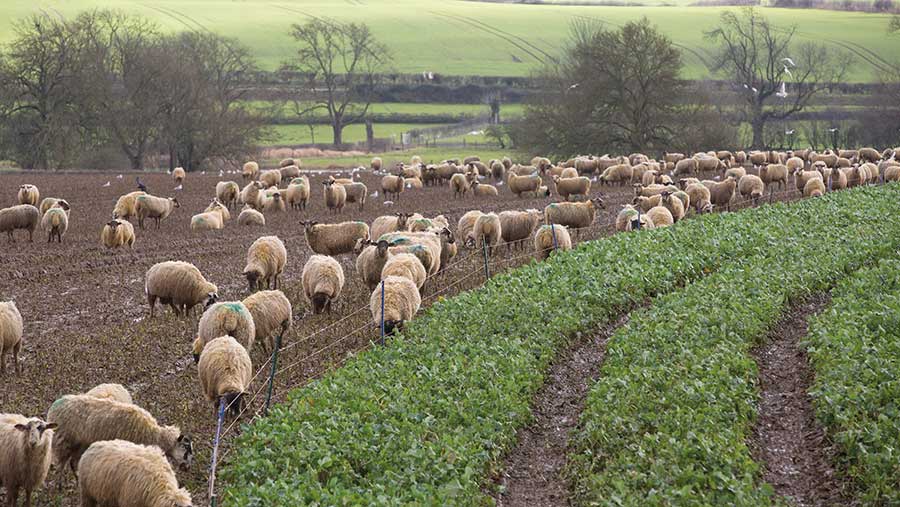2023 challenges facing sheep farmers and how to face them
 © Tim Scrivener
© Tim Scrivener Sheep farmers are being advised to think about how they can make their businesses more resilient following a “perfect storm” of higher fertiliser prices, drought and poor winter forage crops.
Mounting pressures this winter have exposed many in the sector to the volatility of short-term agreements, says Gillian Preece, senior Adas consultant and sheep farmer.
Many sheep farmers have been forced to sell breeding ewes cheaply (some as low as about £80 a head) because they “suddenly had the rug pulled out from under their feet”, with long-standing winter agreements being cancelled at short notice.
See also: Outlook 2023: Tight sheepmeat supplies set to support prices
Cancelled agreements
“With fertiliser costing well over £2/kg nitrogen, many cattle farmers, who normally have sheep on tack during the winter, cancelled their wintering arrangements so they could carry more grass cover over winter, reducing the need for nitrogen in the spring,” explains Ms Preece.
Competition from anaerobic digesters also put pressure on the availability of alternative winter feed.
And while the move towards regenerative farming is providing opportunities for sheep farmers to graze cover crops in arable rotations, these crops did not establish well in drought-affected areas, and yields have been poor.
“Sheep farmers still have the same haulage costs and fencing time for half the amount of winter keep,” she says.
“In some cases, the crop cover is so sparse that arable farmers are opting to drill through the crop in the spring, further reducing the availability of winter grazing, often at short notice.”
Short-term solutions
Farmers who have housed sheep face having to feed them concentrate at more than £400/t.
Others have paid over the odds for winter forage crops, with fodder beet trading at £45/t off-farm or stubble turnips up to £692/ha in some regions.
Many farmers have been left with no option but to reduce stock numbers.
“Ewe lambs which haven’t been put to the ram are now going into the food chain,” adds Mrs Preece.
Early scanning results suggest lamb crops are down by 15-20% on the year. Drought affected feed availability pre-tupping, so farmers may also have fewer lambs to sell come the spring.
“Whatever survival decisions sheep farmers have made this winter, it is critical that they review their strategy going forward,” urges Mrs Preece.
Review your business to reduce volatility
Last year exposed the risk that relying on unsecured grazing agreements poses. Farmers need to look at what changes they can make to ensure their business is more resilient going forward.
Possible solutions to consider include:
- Reducing stocking rates
- Growing more winter forage crops at home to improve self-sufficiency
- Negotiating more secure winter agreements
- Sourcing ewes as yearlings instead of as ewe lambs to avoid having to carry them for the extra time
- Housing and feeding ewes forage and concentrate instead of sending them off the farm.
In the past, sheep farmers have maximised numbers during the summer months by relying on winter grazing agreements.
These have enabled sheep to be “off-loaded” to allow the grass to grow before lambing. But these current challenges faced by the sheep sector really bring that system into question, says Mrs Preece.
“Businesses need to evaluate their own costs carefully and use this information to guide their decision-making and improve future business resilience.”
Free review
The Farming Resilience Fund is offering farmers a free business review with a consultant.
To qualify you must farm within England (although farms that stretch across borders can apply) and be in receipt of basic payments.
To find out which organisations can offer advice in your area, go to gov.uk/government/publications/get-free-business-advice-for-your-farm
